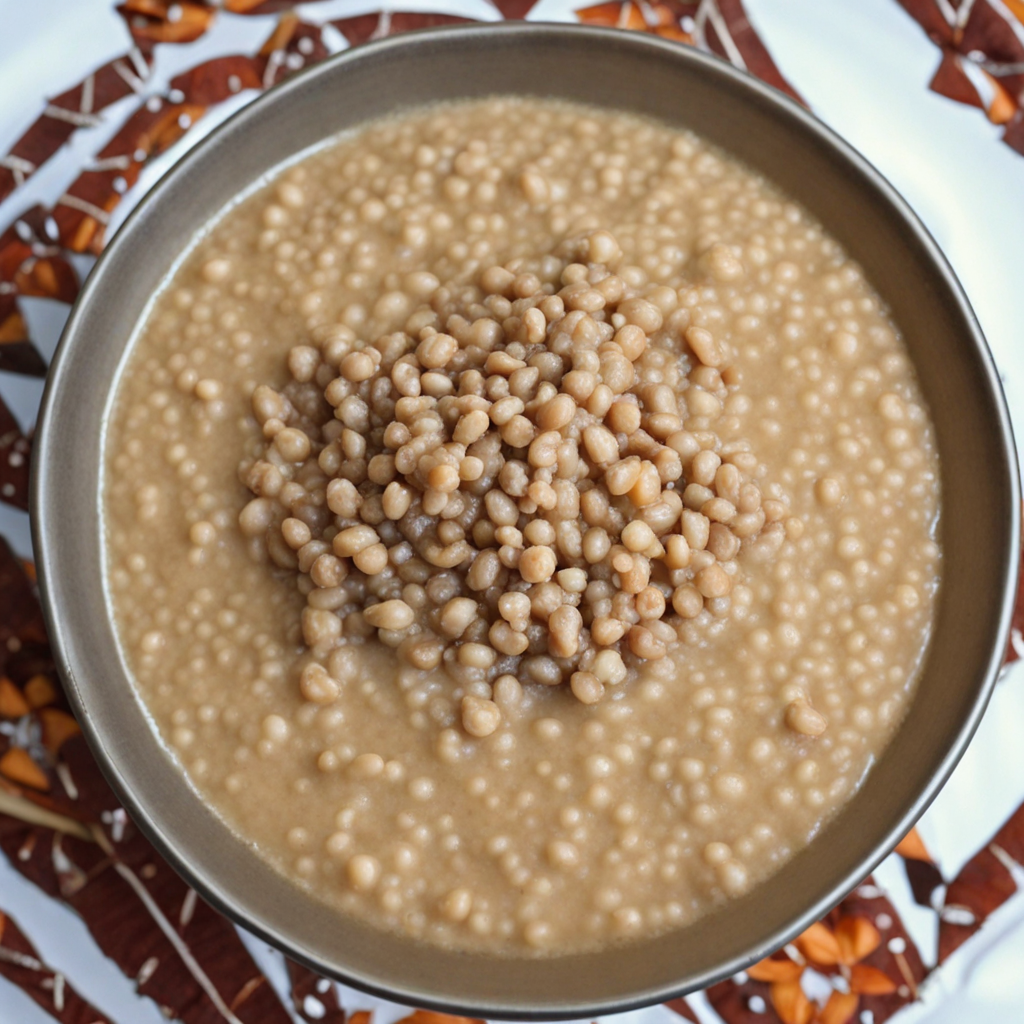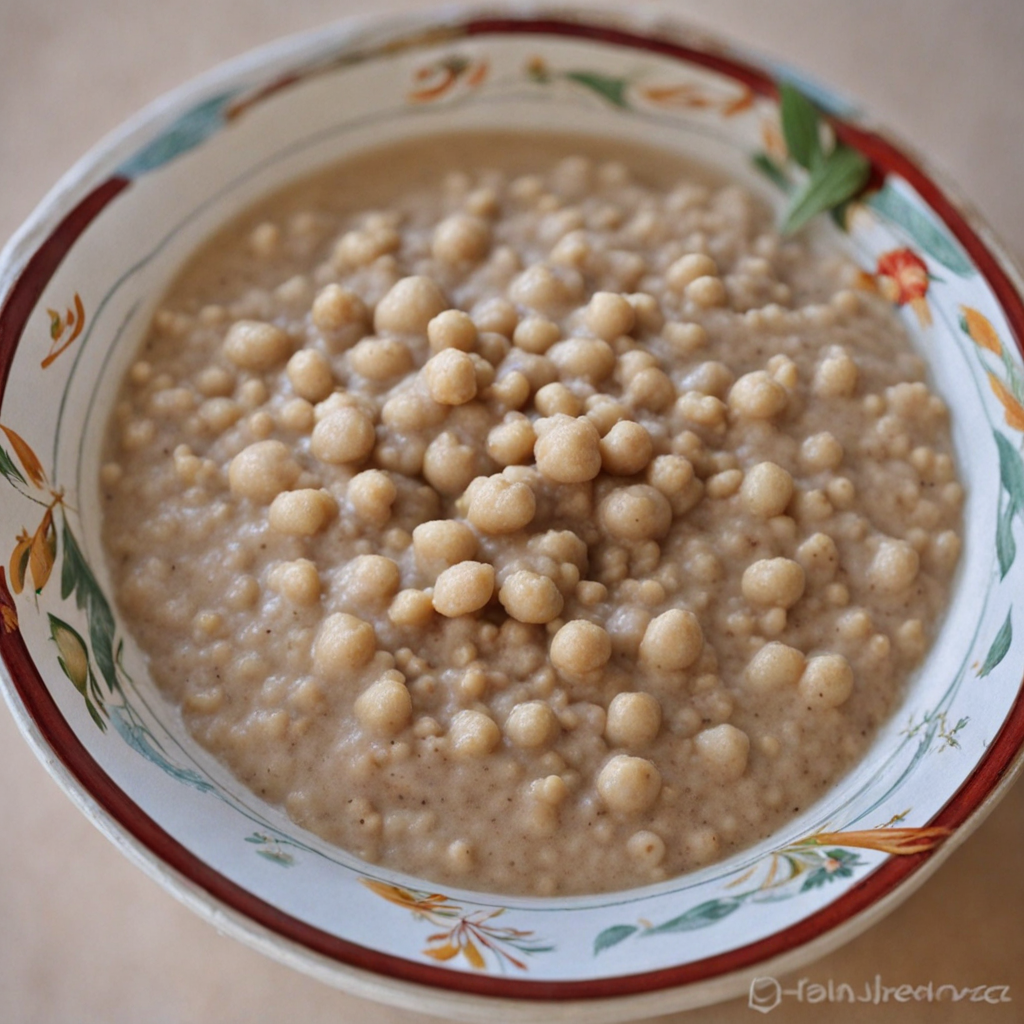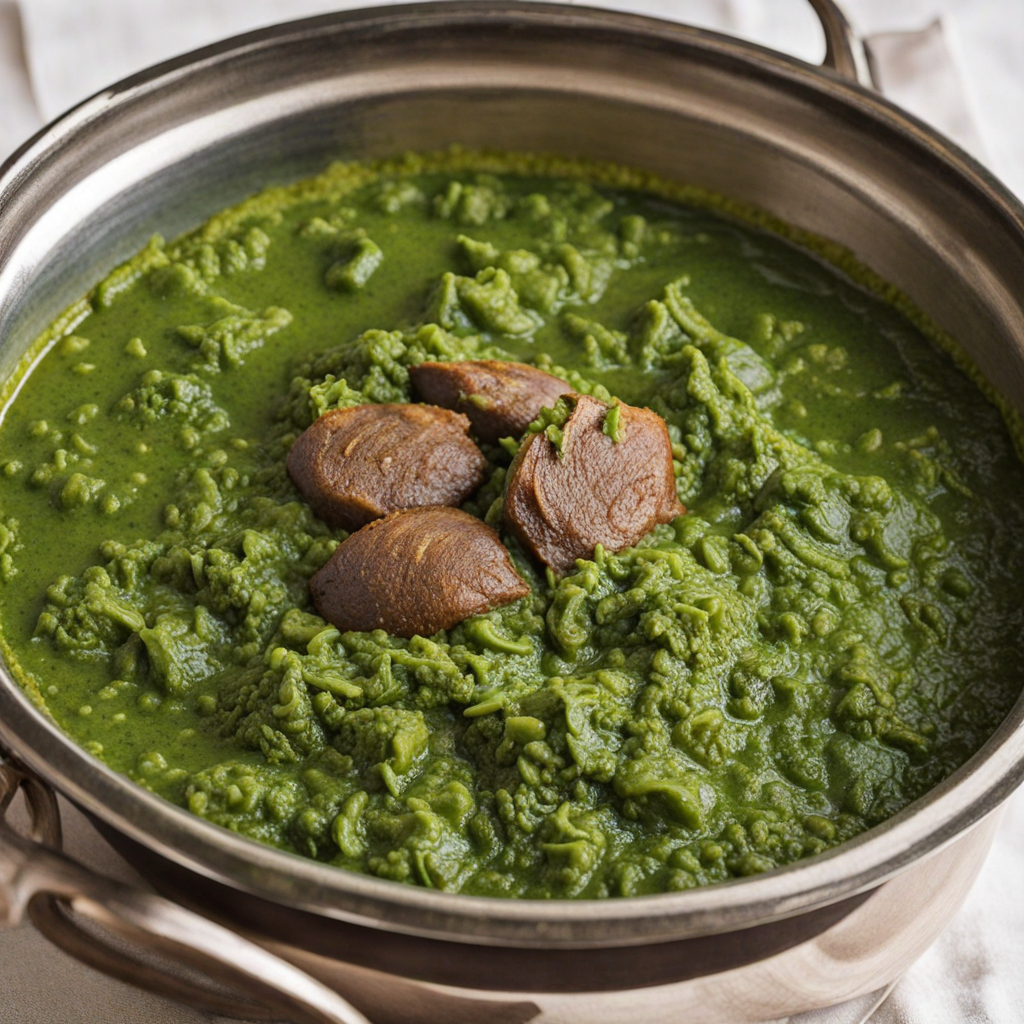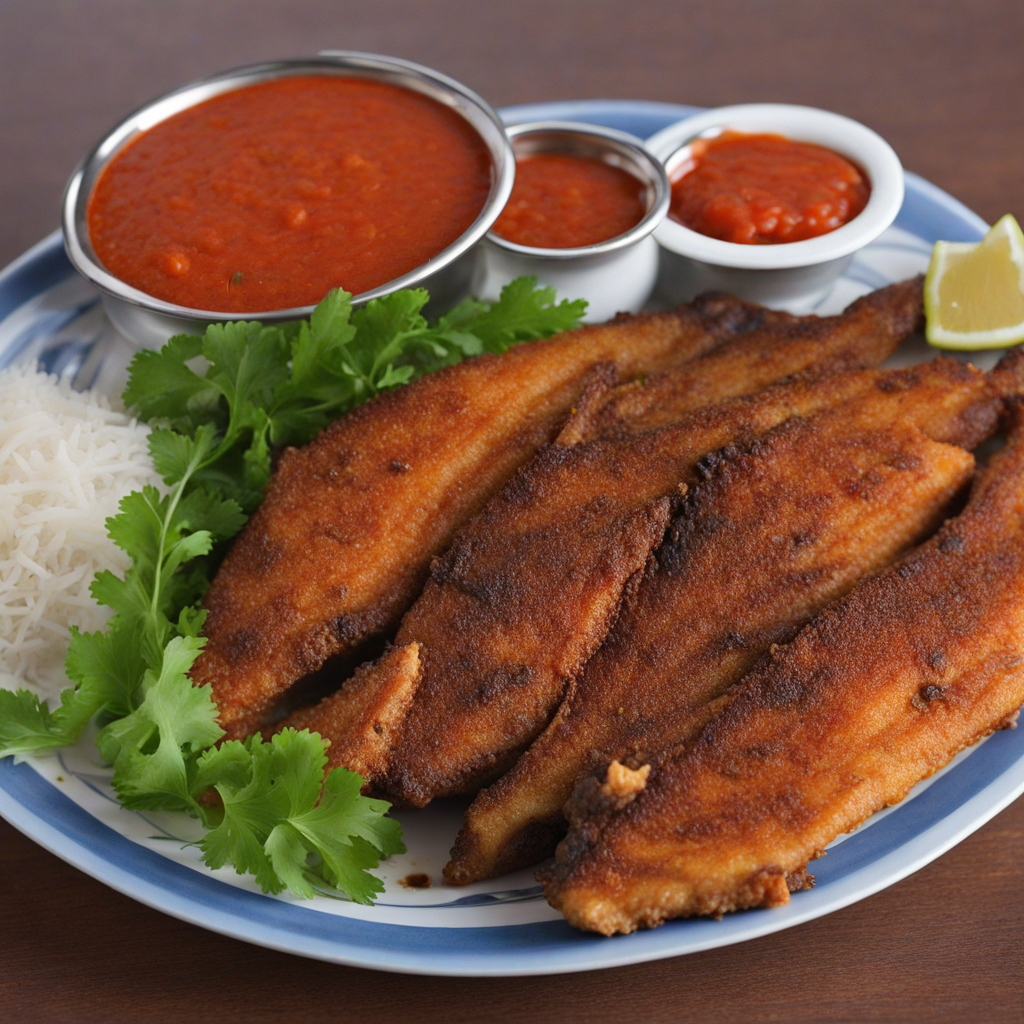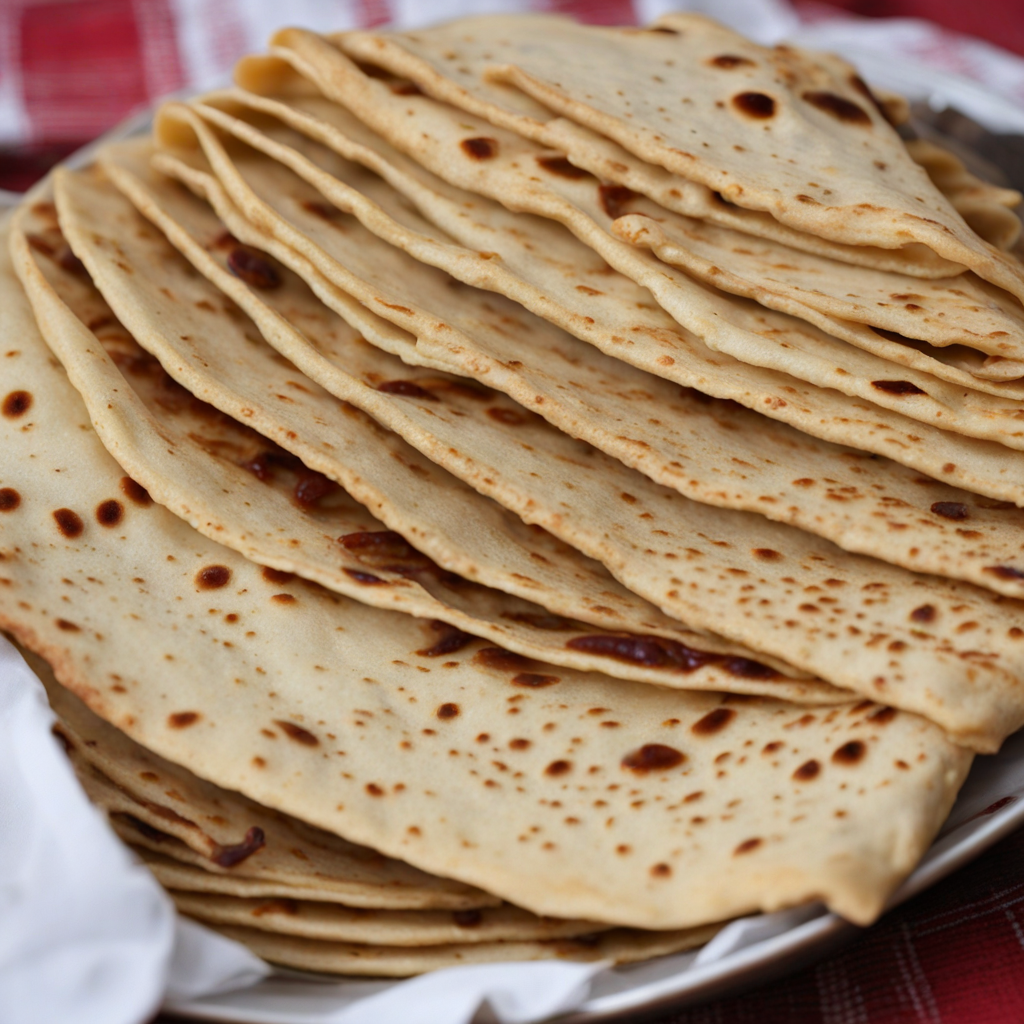Sidah
Sidah is a traditional Sudanese dish that captures the essence of the region's rich culinary heritage. This unique dish primarily consists of a savory blend of grains, often featuring sorghum or wheat, which are ground into a fine flour and then combined with water to create a thick porridge-like consistency. The hearty base is typically seasoned with a mix of spices that might include cumin and coriander, providing a warm, aromatic flavor profile that is both comforting and satisfying. Sidah is often enjoyed as a staple food, serving as a filling accompaniment to various stews or grilled meats, showcasing the Sudanese preference for hearty and nourishing meals. What sets Sidah apart is its versatility in pairing with different ingredients. It can be served with a variety of accompaniments, from spicy vegetable stews to tender, marinated meats, creating an exciting contrast of flavors and textures. The dish often features fresh herbs and greens, enhancing its nutritional value and adding a vibrant touch to the meal. The experience of eating Sidah is not only about the taste but also about the communal aspect of sharing food, as it is often enjoyed in a group setting, emphasizing the strong connections between family and friends in Sudanese culture. The cultural significance of Sidah extends beyond just a meal; it represents an integral part of Sudanese identity and tradition. Often prepared during special occasions or family gatherings, this dish reflects the country’s agricultural practices and the importance of locally sourced ingredients. As you delve into the world of Sidah, you will discover the deep-rooted customs and flavors that have been passed down through generations, making it a delightful and authentic culinary experience that invites you to explore the heart of Sudanese cuisine.
How It Became This Dish
The Story of سدة (Sada): A Culinary Treasure of Sudan #### Origins Sada, often referred to as ‘سدة’ in Arabic, is a traditional dish from Sudan that holds a cherished place in the hearts and homes of its people. Its origins can be traced back hundreds of years, influenced by the diverse cultures and peoples that have passed through the region. Sudan, located in the northeastern part of Africa, has historically been a crossroads for trade, migration, and cultural exchange. This unique position has resulted in a rich tapestry of culinary traditions. Sada is primarily made from wheat flour, which is an essential staple in Sudanese cuisine. Its preparation involves mixing the flour with water to form a dough, which is then shaped into round discs and cooked on a hot surface, similar to the process used to make flatbreads like chapati or injera. The dough can also be flavored or enriched with various ingredients, depending on regional and family traditions. #### Cultural Significance In Sudanese culture, Sada is more than just a dish; it is a symbol of hospitality and community. Traditionally, Sada is served during significant gatherings, such as weddings, religious celebrations, and communal meals. It is often accompanied by stews, grilled meats, or vegetables, making it a versatile staple that complements a wide variety of flavors. One of the most notable aspects of Sada is its role in Sudanese hospitality. When guests visit a home, it is customary for the host to serve Sada, signifying respect and generosity. The act of sharing food is a vital part of Sudanese culture, and Sada embodies this spirit, bringing people together around the table. Sada also holds a significant place in Sudan’s agricultural narrative. Wheat, as a primary ingredient, is a crop that has been cultivated in Sudan for centuries. The reliance on local agricultural produce underscores the connection between the people and their land. Sada is often made from locally sourced wheat, fostering a sense of pride in regional farming practices and the importance of sustainability. #### Development Over Time Historically, the preparation of Sada has evolved, reflecting changes in technology, trade, and cultural influences. In ancient times, the methods for grinding wheat were labor-intensive, often relying on manual tools. As technology progressed, the introduction of windmills and watermills made the process more efficient, allowing for the production of finer flour. The trade routes that passed through Sudan also played a crucial role in shaping the dish. With the influx of various cultures, spices, and cooking techniques—particularly from neighboring regions such as Egypt and the Horn of Africa—Sudanese cuisine began to incorporate new flavors. This cross-pollination of culinary practices contributed to the evolution of Sada, leading to variations that include different spices or cooking methods. In contemporary times, Sada has adapted to modern culinary trends while retaining its traditional essence. Urbanization and globalization have introduced new ingredients and cooking techniques, allowing for innovative interpretations of the dish. Contemporary Sudanese chefs are experimenting with Sada, incorporating diverse flavors inspired by international cuisines, while still honoring the traditional recipes passed down through generations. #### Sada in the Modern Era In today’s Sudanese society, Sada remains a staple in households, symbolizing continuity amidst change. It is often featured in family meals, street food stalls, and restaurants, appealing to both young and old. The dish’s simplicity makes it accessible, while its versatility allows for endless creativity in pairing it with various accompaniments. In recent years, there has been a resurgence of interest in traditional Sudanese foods, including Sada. This revival is driven by a growing awareness of the importance of preserving cultural heritage and sustainability in food practices. Culinary initiatives and food festivals celebrating Sudanese cuisine have emerged, providing a platform for chefs and home cooks to share their interpretations of traditional dishes. Moreover, the global diaspora of Sudanese people has contributed to the spread of Sada beyond the borders of Sudan. In countries with significant Sudanese communities, such as the United States and the United Kingdom, Sada is often served in gatherings, allowing expatriates to maintain a connection to their roots. This cross-cultural exchange has introduced Sada to new audiences, fostering appreciation for its rich history and cultural significance. #### Conclusion Sada is more than just a dish; it is a culinary embodiment of Sudanese identity, history, and tradition. From its humble origins as a staple food to its prominent role in cultural celebrations, Sada represents the resilience and adaptability of Sudanese cuisine. As it continues to evolve in the modern era, Sada remains a cherished part of Sudanese life, celebrated for its ability to bring people together and its deep ties to the agricultural landscape of the region. As we explore the story of Sada, we recognize the importance of preserving culinary traditions that connect us to our past while embracing the innovations that shape our future. Sada is a testament to the power of food as a medium of cultural expression, and it will undoubtedly continue to inspire generations to come, serving as a bridge between heritage and modernity in the vibrant tapestry of Sudanese cuisine.
You may like
Discover local flavors from Sudan


